By Jon P. Weimer, Colorado TU Director-At-Large, Communications Committee
This article was originally published in the 2017 Winter Edition of High Country Angler
Let us know your thoughts about the potential fishing increase with this short survey!
In the summer of 2016, Colorado Parks and Wildlife (CPW) conducted a series of 18 public meetings across the State, entitled Funding the Future. CPW anticipates budget shortfalls, and the meetings were conducted to get feedback from hunters and anglers on how best to stop the financial hemorrhaging and perhaps even enhance its coffers. Increasing hunting and fishing license fees for State residents has been proffered by the Agency as one possible option.
For more information from Colorado Parks and Wildlife, visit:
History of License Revenue
CPW Financial Sustainability
Funding the Future
Background
In 2011, the Division of Parks and Outdoor Recreation merged with the Division of Wildlife. Ostensibly, the merger would allow the new Agency—CPW—to capture some efficiencies through sharing resources, such as accounting and marketing, and position it to connect with the general public as a single organization. A prevalent rumor at the time was that the merger was enacted to bail out the Parks Division using Wildlife funds. This view, apparently, was a misconception. There are very specific Federal and State laws that require that Wildlife funds---which include hunting and fishing license fees-- be spent only for Wildlife purposes, while Park funds were to be spent only for Park purposes. It is important to note that although these two Divisions merged, each retains its own budget. It is also important to note the irony that Parks currently is in relatively good shape financially. It is Wildlife that is hurting financially, and providing the impetus for CPW to plead for more revenue.
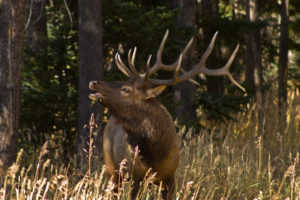 Current Status
Current Status
CPW has a user-pay, user-benefit funding mode; it does not receive General Fund revenue (i.e., taxpayer money). So, fish and wildlife conservation programs, as well as management of recreational lands, are primarily funded by hunters, anglers and park visitors, through sales of hunting and fishing licenses, habitat stamps, and park passes. More specifically, about 62 percent of the revenue generated by CPW comes from hunting and fishing license fees. Federal excise taxes levied on hunting and fishing equipment comprise 16 percent of the budget, and grants from Great Outdoors Colorado (GOCO) make up 12 percent of the revenue. Those Federal excise taxes are collected from makers of outdoor equipment which are returned to the State based on license numbers and geographic size. Any proposed increase in license fees must be approved through the Colorado legislature before they are finalized by the governor’s signature.
Presently, resident fishing licenses for adults (age 16 to 64) cost $26. A $10 habitat stamp is also required from adults (18 to 64 years). Licenses for seniors (age 65 and over) are provided free, although they must pay a $1 charge, $.25 of which goes for a search and rescue fee, and $.75 of which reflects a Public Education Advisory Council (CPEAC) fee.
Reasons for Budget Deficits
CPW’s Wildlife Management Division claims that, in recent years, it has faced substantial budget shortfalls which have resulted in the elimination of over 50 positions and $40 million from Wildlife budgets. Without increasing revenues, CPW states that Wildlife Management will have to cut additional staff and core services, which could include reductions to wildlife and property management, biological research, access for hunting and fishing, as well as the closure of some reservoirs and fish hatcheries. CPW avers that, basically, for the past decade, its incoming revenue has been relatively stagnant while faced with increased costs, a larger mission, and more complex issues to manage.
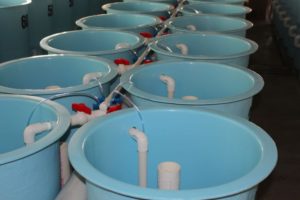 CPW is the largest owner of dams in Colorado and oversees 19 hatcheries in the State, where it raises 90 million fish annually for stocking rivers and lakes, and with limited funds it says it is falling behind on dam and hatchery maintenance. As examples of rising costs since 2005 – the last time resident fishing license fees were increased – CPW points to some specific examples: leasing water for hatcheries has increased 344 percent; fish food has risen 92 percent; and the cost of a fisheries work boat has increased 24 percent. CPW personnel indicate that there have been some major investments out of their control such as information technology and new Statewide accounting systems. They also point to new wildlife challenges with which they’ve had to contend such as whirling disease and invasion of aquatic nuisance species that have imposed unexpected costs. Then, of course, costs such as those associated with personnel, health care, and utilities have consistently increased during this time span as well.
CPW is the largest owner of dams in Colorado and oversees 19 hatcheries in the State, where it raises 90 million fish annually for stocking rivers and lakes, and with limited funds it says it is falling behind on dam and hatchery maintenance. As examples of rising costs since 2005 – the last time resident fishing license fees were increased – CPW points to some specific examples: leasing water for hatcheries has increased 344 percent; fish food has risen 92 percent; and the cost of a fisheries work boat has increased 24 percent. CPW personnel indicate that there have been some major investments out of their control such as information technology and new Statewide accounting systems. They also point to new wildlife challenges with which they’ve had to contend such as whirling disease and invasion of aquatic nuisance species that have imposed unexpected costs. Then, of course, costs such as those associated with personnel, health care, and utilities have consistently increased during this time span as well.
Possible Solutions for Reducing Budget Deficit
Resident License Fee Increase: During the course of CPW’s Funding for Wildlife series of public meetings, the Agency discussed, and received from participants, a number of proposed solutions to remedy the budget deficit but invariably, possible license fee increases loomed large. At these meetings, CPW personnel attempted to explain the Agency’s budget situation, detailing what it had done recently to address shortfalls in revenue, and providing a forecast of how CPW might address its programs. CPW indicated that in order to maintain the current wildlife programs and restore or add a slate of new programs requested by stakeholders would, essentially, require doubling the price of most State hunting and fishing licenses. This calculation, as might be expected, received emphasis from the media and stakeholders, although CPW insisted that the Agency had NOT proposed such an increase. However, even CPW Director, Bob Broscheid, admitted that a license increase must be considered.
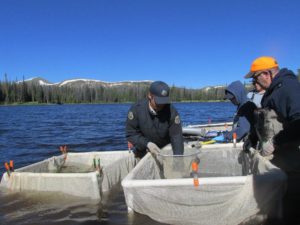 Regarding fishing licenses, the price increment in resident fishing licenses that has been bandied about most often at these meetings was a hike for adults from $26 to $50, almost a 100 percent increase. If such an increase was approved, CPW discussed whether or not it should be implemented in one year or, perhaps, in stages over a 4 to 5 year time span. Whatever price increase instituted, if any, should have a sound rationale if it’s going to receive legislative approval. CPW might look at the price increases that other states have adopted, or possibly the price increase could be based on some econometric modeling derived from results obtained in a “willingness to pay” survey. In addition to holding 18 public meetings this past summer, CPW send post cards to 3,000 randomly chosen resident license holders (half hunters, half anglers) to ask if they supported increasing license prices. CPW also gathered input from an online public comment form on its website regarding people’s willingness to pay more for a fishing/hunting license.
Regarding fishing licenses, the price increment in resident fishing licenses that has been bandied about most often at these meetings was a hike for adults from $26 to $50, almost a 100 percent increase. If such an increase was approved, CPW discussed whether or not it should be implemented in one year or, perhaps, in stages over a 4 to 5 year time span. Whatever price increase instituted, if any, should have a sound rationale if it’s going to receive legislative approval. CPW might look at the price increases that other states have adopted, or possibly the price increase could be based on some econometric modeling derived from results obtained in a “willingness to pay” survey. In addition to holding 18 public meetings this past summer, CPW send post cards to 3,000 randomly chosen resident license holders (half hunters, half anglers) to ask if they supported increasing license prices. CPW also gathered input from an online public comment form on its website regarding people’s willingness to pay more for a fishing/hunting license.
In economics, there’s a concept called price elasticity. Price elasticity has many facets to it but, basically, it refers to determining what percent-increase in the price of a product or service will lead to optimal revenue, recognizing that as prices increase the numbers of customers willing to buy a product decreases. Very simply, one is looking for that price “sweet spot” that will lead to the most revenue. If your price falls below that sweet spot, you won’t obtain as much revenue as possible; however, if you overshoot that sweet spot, you could actually lose revenue because a large number of your previous customers decline to buy your product. Retail outlets have the luxury and flexibility to continually change prices, looking for that sweet spot. Government agencies don’t have that luxury---they make a decision that they have to live with for a while.

The $26 to $50 price hike in resident fishing license fees that has been discussed may be tolerable to a certain segment of the angling population, but not to another that may feel that such an increment is too steep a hike, and a number of anglers may simply stop purchasing a license. Obviously, it’s a complex and important decision that CPW has to make, requiring a great deal of deliberation. CPW has also discussed at these public meetings the idea that, in order to avoid further price hikes that are perceived as too steep, the Agency may attempt to secure legislative approval to tie resident angling license fees to the Consumer Price Index (CPI), a price structure that would basically mirror that for out-of-State angling/hunting licenses which are indexed to the CPI, usually resulting in small annual increases to keep up with inflation.
In addition to possibly raising the resident fishing license fees for adults, CPW is also considering levying a license fee for seniors who, as mentioned earlier in this article, are currently charged $1. Seniors account for approximately 20 percent of the State’s annual license purchases. In 2015, CPW issued 85,510 senior fishing licenses. None of these senior licenses count toward the license numbers that determine Colorado’s share of Federal excise taxes; reinstating a senior fishing license fee would thus increase Colorado’s Federal funds as well as generating dollars directly from sales. Further, it costs about $1.5 million annually just to print the licenses – making the status quo a net financial loss. Thus, the Agency sees an opportunity to further enhance revenue by requiring seniors to buy fishing licenses, although no specific price structure has been discussed in any detail for this demographic group.
CPW considers an increase in both hunting and fishing licenses to be a feasible means of offsetting, at least in part, its financial difficulties. CPW claims that if the current fee structure remains, and no other fund-raising and/or cost cutting measures are instituted, the Agency will need approximately $15-20 million additional each year to maintain current operations, and up to $36 million to implement additional programs that hunters and anglers have indicated are important to wildlife management and conservation in the State – such as expanded access or restoring “Fishing is Fun” grants to historic levels. As mentioned earlier, after public comments are received and analyzed, the Agency must approach the legislature to ask for a bill approving any resident license fee increase. Undoubtedly, CPW hopes to get a vote of confidence from the hunting and angling public that would help persuade legislators.
Other Possible Solutions: In addition to, or in lieu of, raising resident license fees, the Agency has sought to broaden its sources of funding, looking for opportunities to bring in new revenue. For example, in the series of public meetings sponsored by CPW, participants suggested that there is a much larger pool of public land users that exist beyond hunters and anglers that might be able to help fund CPW. Why, they ask, are hunters and anglers being asked to pay more while others who use public land, such as hikers, birdwatchers, and photographers are exempt?
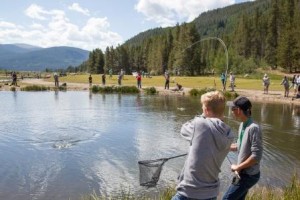
It was also suggested at these public meetings that the general public can purchase a Habitat Stamp and/or contribute money via the Non-Game and Endangered Wildlife Fund income box checkoff on their Colorado tax form to raise money for wildlife conservation—but that these venues may not be generally known and could use a massive publicity push.
Further questions were raised at these meetings about whether CPW in general, or Wildlife Management in particular, could initiate additional cost-cutting measures. CPW, as you might expect, indicates that it has already initiated a number of efficiencies to offset declines in revenue, along with implementing significant reductions in program and operation expenses. More cuts in funding, according to CPW, would lead to further reduction to popular and important “Fishing is Fun”, Wetland, Boating and Habitat Protection grants, the Aquatic Nuisance Species Program and, as mentioned earlier, a reduction in capital improvement projects such as repairing hatchery runways and maintenance of CPW-owned dams.
A possible ray of hope for additional funding is the proposed “Recovering America’s Wildlife Act” (H.R. 5650), which would direct approximately $1.3 billion in federal revenue from energy and mineral development toward wildlife conservation efforts across the nation. If this legislation were to pass at the Federal level, it should bring significant additional revenue for meeting Colorado’s fish and wildlife needs. At the time this writing, no Congressional action had been taken on this proposed legislation.
In short: CPW states that the basic problem is that revenue is essentially fixed at 2005 levels, while operating costs have continued to rise, so that budget cuts and program elimination are the only tools available to balance the budget. Colorado’s natural resources, according to CPW, are experiencing the pressure of population growth and increasingly fragmented habitat. A key factor in maintaining financial sustainability in the long run, they argue, will be the ability to increase license fees and continue to adjust them on a regular basis to offset inflation – a step they believe will be needed if Colorado is to remain a premiere destination for outdoor activities.






 Colorado TU’s Board of Directors has voted to support HB 1321. Since 2009, CPW has cut or defunded fifty staff positions and sliced $40 million from the wildlife budget. Without new revenue, more painful cuts are inevitable.This bill gives the Parks and Wildlife Commission authority to set fees, within a cap set at a 50% increase from current levels. Importantly, it allows future license fees to be adjusted gradually over time to keep up with inflation rather than needing the legislature to approve larger increases every few years. The bill would also allow out-of-state fishing license fees for Colorado to be increased to bring Colorado’s pricing in line with peer states like Montana, Wyoming, and Utah. A senior fishing license (not more than half the regular price) would also be re-instituted. The bill also would add a new sticker and fee program for boats, to help finance inspections for aquatic nuisance species.
Colorado TU’s Board of Directors has voted to support HB 1321. Since 2009, CPW has cut or defunded fifty staff positions and sliced $40 million from the wildlife budget. Without new revenue, more painful cuts are inevitable.This bill gives the Parks and Wildlife Commission authority to set fees, within a cap set at a 50% increase from current levels. Importantly, it allows future license fees to be adjusted gradually over time to keep up with inflation rather than needing the legislature to approve larger increases every few years. The bill would also allow out-of-state fishing license fees for Colorado to be increased to bring Colorado’s pricing in line with peer states like Montana, Wyoming, and Utah. A senior fishing license (not more than half the regular price) would also be re-instituted. The bill also would add a new sticker and fee program for boats, to help finance inspections for aquatic nuisance species. 
 CPW is the largest owner of dams in Colorado and oversees 19 hatcheries in the State, where it raises 90 million fish annually for stocking rivers and lakes, and with limited funds it says it is falling behind on dam and hatchery maintenance. As examples of rising costs since 2005 – the last time resident fishing license fees were increased – CPW points to some specific examples: leasing water for hatcheries has increased 344 percent; fish food has risen 92 percent; and the cost of a fisheries work boat has increased 24 percent. CPW personnel indicate that there have been some major investments out of their control such as information technology and new Statewide accounting systems. They also point to new wildlife challenges with which they’ve had to contend such as whirling disease and invasion of aquatic nuisance species that have imposed unexpected costs. Then, of course, costs such as those associated with personnel, health care, and utilities have consistently increased during this time span as well.
CPW is the largest owner of dams in Colorado and oversees 19 hatcheries in the State, where it raises 90 million fish annually for stocking rivers and lakes, and with limited funds it says it is falling behind on dam and hatchery maintenance. As examples of rising costs since 2005 – the last time resident fishing license fees were increased – CPW points to some specific examples: leasing water for hatcheries has increased 344 percent; fish food has risen 92 percent; and the cost of a fisheries work boat has increased 24 percent. CPW personnel indicate that there have been some major investments out of their control such as information technology and new Statewide accounting systems. They also point to new wildlife challenges with which they’ve had to contend such as whirling disease and invasion of aquatic nuisance species that have imposed unexpected costs. Then, of course, costs such as those associated with personnel, health care, and utilities have consistently increased during this time span as well. Regarding fishing licenses, the price increment in resident fishing licenses that has been bandied about most often at these meetings was a hike for adults from $26 to $50, almost a 100 percent increase. If such an increase was approved, CPW discussed whether or not it should be implemented in one year or, perhaps, in stages over a 4 to 5 year time span. Whatever price increase instituted, if any, should have a sound rationale if it’s going to receive legislative approval. CPW might look at the price increases that other states have adopted, or possibly the price increase could be based on some econometric modeling derived from results obtained in a “willingness to pay” survey. In addition to holding 18 public meetings this past summer, CPW send post cards to 3,000 randomly chosen resident license holders (half hunters, half anglers) to ask if they supported increasing license prices. CPW also gathered input from an online public comment form on its website regarding people’s willingness to pay more for a fishing/hunting license.
Regarding fishing licenses, the price increment in resident fishing licenses that has been bandied about most often at these meetings was a hike for adults from $26 to $50, almost a 100 percent increase. If such an increase was approved, CPW discussed whether or not it should be implemented in one year or, perhaps, in stages over a 4 to 5 year time span. Whatever price increase instituted, if any, should have a sound rationale if it’s going to receive legislative approval. CPW might look at the price increases that other states have adopted, or possibly the price increase could be based on some econometric modeling derived from results obtained in a “willingness to pay” survey. In addition to holding 18 public meetings this past summer, CPW send post cards to 3,000 randomly chosen resident license holders (half hunters, half anglers) to ask if they supported increasing license prices. CPW also gathered input from an online public comment form on its website regarding people’s willingness to pay more for a fishing/hunting license.

 Back in the 1960’s planners thought that Aspen’s population (1,101 in 1960) would reach 30,000 by the end of the century and that additional water supplies would be necessary. Aspen’s population didn’t grow much. In 2000 it was up to 5,914 and by 2010 had added less than a thousand more. Looking forward, the City’s population isn’t expected to grow much more over the next 60 years either, yet Aspen continues to hang on to the notion that they might, someday, need these destructive dams and reservoirs.
Back in the 1960’s planners thought that Aspen’s population (1,101 in 1960) would reach 30,000 by the end of the century and that additional water supplies would be necessary. Aspen’s population didn’t grow much. In 2000 it was up to 5,914 and by 2010 had added less than a thousand more. Looking forward, the City’s population isn’t expected to grow much more over the next 60 years either, yet Aspen continues to hang on to the notion that they might, someday, need these destructive dams and reservoirs.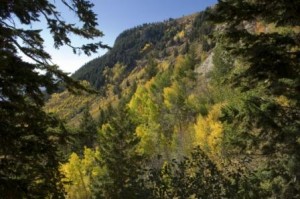
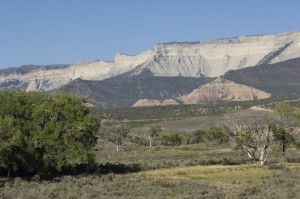 The MLP process is a new tool that promises to address some of that top-down, fragmented approach to public land management. To their credit, the BLM is listening and incorporating suggestions from local ranchers, conservation groups and elected officials into their leasing plan for South Park.
The MLP process is a new tool that promises to address some of that top-down, fragmented approach to public land management. To their credit, the BLM is listening and incorporating suggestions from local ranchers, conservation groups and elected officials into their leasing plan for South Park.

